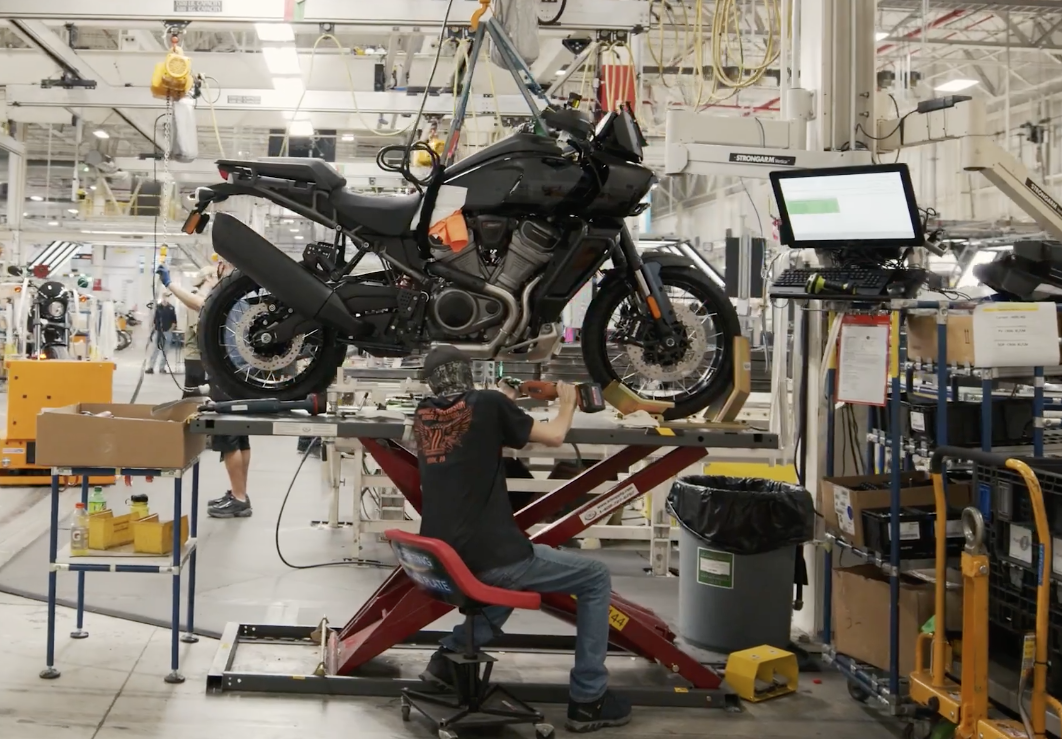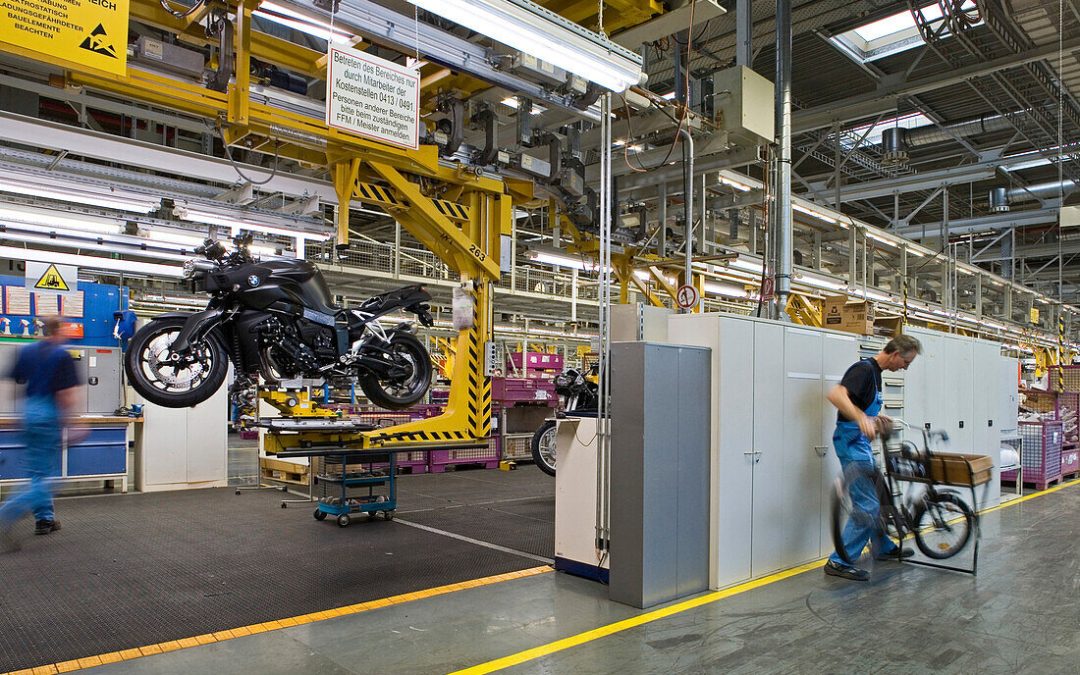The fast-paced world of motorcycle manufacturing is always seeking ways to improve efficiency, streamline processes, and maintain high quality. One of the key areas where advancements are making a tremendous impact is in the paint inspection process. By introducing automated paint inspection technology into production lines, manufacturers are witnessing a significant boost in efficiency and quality. In this article, we’ll delve deep into how you can Increase Motorcycle Production with Automated Paint Inspection and the remarkable benefits of this innovative approach.

The Importance of Quality in Motorcycle Production
Maintaining the highest level of quality is critical for motorcycle manufacturers. The paint job on a motorcycle is not just for aesthetic purposes; it serves as a protective layer against environmental elements and wear and tear. Ensuring that the paint is applied correctly and without defects is a vital aspect of the production process.
Challenges in Traditional Paint Inspection
Traditionally, paint inspection has been a manual process, relying on the keen eyes of quality control inspectors. While human inspection is valuable, it comes with several limitations:
- Subjectivity: Different inspectors may have varying standards.
- Fatigue: Human inspectors may get tired, leading to missed defects.
- Time-Consuming: Manual inspection is slow and can bottleneck production lines.
The Advent of Automated Paint Inspection
With advancements in technology, automated paint inspection systems have emerged as a game-changer for the industry. These systems leverage powerful sensors, cameras, and AI algorithms to detect defects with high precision.
Key Features of Automated Paint Inspection Systems
Modern automated paint inspection systems are equipped with a range of features that ensure accuracy and efficiency:
- High-Resolution Cameras: Capture detailed images of the painted surfaces.
- AI-Powered Algorithms: Identify even the smallest defects such as blisters, scratches, and uneven coatings.
- Real-Time Data Analysis: Provide instant feedback and reports.
Benefits of Automated Paint Inspection
Integrating automated paint inspection into the motorcycle production process offers numerous advantages:
Enhanced Accuracy and Consistency
Automated systems eliminate the subjectivity associated with human inspection. They operate with consistent standards, ensuring that each motorcycle meets the same high-quality criteria.
Increased Production Speed
By automating the inspection process, manufacturers can significantly speed up production lines. Automated systems work continuously without breaks, reducing downtime and increasing overall productivity.
Cost Savings
While the initial investment in automated paint inspection systems may be significant, the long-term savings are substantial. Fewer defects mean less rework and scrap, leading to reduced material and labor costs.
Implementing Automated Paint Inspection: A Step-by-Step Guide
For manufacturers looking to adopt automated paint inspection, here is a step-by-step guide to ensure a smooth transition:
Step 1: Assess Your Current Process
Begin by evaluating your current paint inspection process. Identify areas where automation can bring the most benefits.
Step 2: Choose the Right System
Research and select a system that fits your specific needs. Consider factors such as the type of defects you want to detect, the speed of your production line, and the integration requirements with your existing setup.
Step 3: Train Your Team
Ensure that your team is well-trained to operate the new system. Provide comprehensive training sessions and resources to help them understand the functionality and benefits of the automated inspection process.
Step 4: Conduct Pilot Testing
Before full-scale implementation, conduct pilot tests to identify any potential issues and make necessary adjustments. This will help you fine-tune the system for optimal performance.
Step 5: Monitor and Optimize
Once the system is up and running, continuously monitor its performance. Use the data generated by the automated inspection system to identify areas for further improvement and optimization.
Case Studies: Success Stories in the Industry
Several motorcycle manufacturers have already embraced automated paint inspection, achieving remarkable results. Here are a few success stories:
Case Study 1: Manufacturer A
A leading motorcycle manufacturer implemented automated paint inspection and witnessed a 30% increase in production efficiency. The system’s high accuracy reduced the number of defects, resulting in higher customer satisfaction and reduced warranty claims.
Case Study 2: Manufacturer B
Another prominent manufacturer reported a 20% reduction in production costs after adopting automated paint inspection. The system’s ability to detect even minor defects early in the process minimized rework and material wastage.
Future Trends in Automated Paint Inspection
The field of automated paint inspection is continually evolving. Some of the future trends to watch for include:
- Integration with IoT: Connecting inspection systems with IoT devices for real-time monitoring and control.
- Advanced AI Algorithms: Continued development of AI algorithms for even more precise defect detection.
- Remote Monitoring: Enabling remote monitoring and diagnostics to improve system maintenance and troubleshooting.
Conclusion
Incorporating automated paint inspection into motorcycle production lines is no longer a luxury but a necessity in today’s competitive market. This technology not only enhances quality and efficiency but also delivers significant cost savings. As the industry continues to innovate, those who embrace automated paint inspection will undoubtedly stay ahead of the curve.

FAQs
Q: What are the key benefits of automated paint inspection?
A: Automated paint inspection offers enhanced accuracy and consistency, increased production speed, and cost savings.
Q: How does automated paint inspection improve production efficiency?
A: It eliminates subjectivity and fatigue associated with human inspection, operates continuously, reduces downtime, and ensures consistent quality.
Q: Can automated paint inspection systems be integrated with existing production lines?
A: Yes, many automated paint inspection systems are designed to seamlessly integrate with existing production lines, offering a smooth transition.
For more insights on related topics, you may find these articles on [High-Speed Genetic Analysis](https://strobox.ai/high-speed-genetic-analysis-and-sequencing-monitoring/) and [Semiconductor Manufacturing Inspection](https://strobox.ai/high-speed-semiconductor-manufacturing-inspection/) helpful.
For an external perspective on improving paint quality, check out this article on [custom paint for motorcycles](https://www.redlineharley.com/blog/introducing-apex-factory-custom-paint–51292) (rel=’nofollow’).
